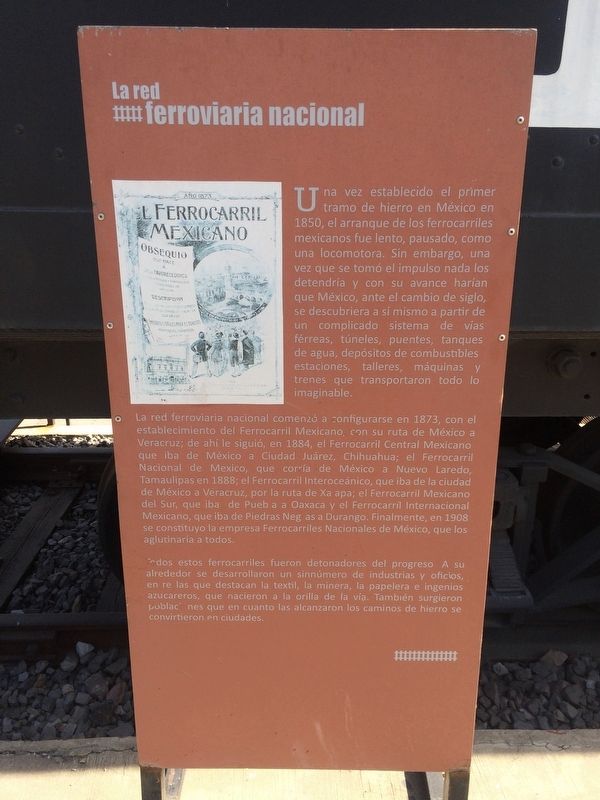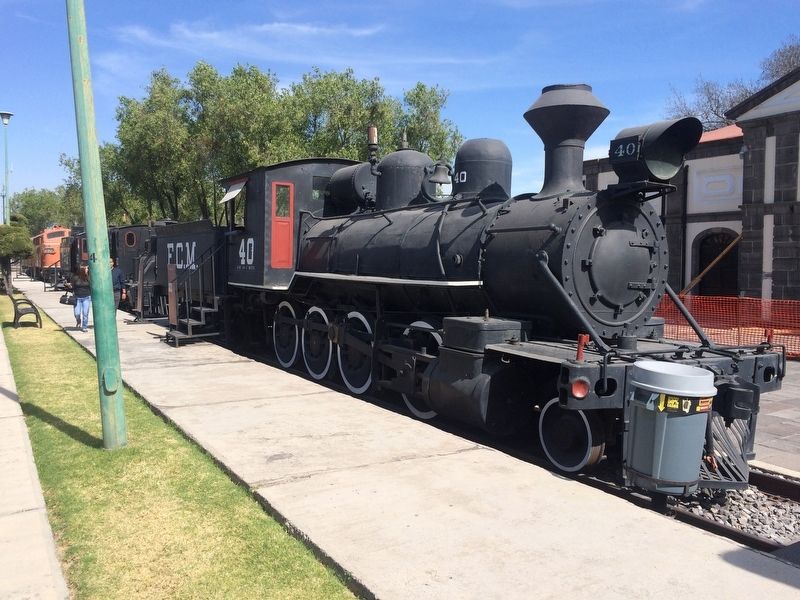Puebla, Mexico — The Central Highlands (North America)
A National Railroad Network
La red ferroviaria nacional
Una vez establecido el primer tramo de hierro en México en 1850, el arranque de los ferrocarriles mexicanos fue lento, pausado, como una locomotora. Sin embargo, una vez que se tomó el impulso nada los detendría y con su avance harían que México, ante el cambio de siglo, se descubriera a sí mismo a partir de un complicado sistema de vías férreas, túneles, puentes, tanques o de agua, depósitos de combustibles, estaciones, talleres, máquinas y trenes que transportaron todo lo imaginable.
La red ferroviaria nacional comenzó a configurarse en 1873, con el establecimiento del Ferrocarril Mexicano, con su ruta de México a Veracruz; de ahí le siguió, en 1884, el Ferrocarril Central Mexicano que iba de México a Ciudad Juárez, Chihuahua; el Ferrocarril Nacional de Mexico, que corría de México a Nuevo Laredo, Tamaulipas en 1888; el Ferrocarril Interoceánico, que iba de la ciudad de México a Veracruz, por la ruta de Xalapa; el Ferrocarril Mexicano del Sur, que iba de Puebla a Oaxaca y el Ferrocarril Internacional Mexicano, que iba de Piedras Negras a Durango. Finalmente, en 1908 se constituyó la empresa Ferrocarriles Nacionales de México, que los aglutinaría a todos.
Todos estos ferrocarriles fueron detonadores del progreso. A su alrededor se desarrollaron un sinnúmero de industrias y oficios, entre las que destacan la textil, la minera, la papelera e ingenios azucareros, que nacieron a la orilla de la vía. También surgieron poblaciones que en cuanto las alcanzaron los caminos de hierro se convirtieron en ciudades.
English translation:
A National Railroad Network
Once the first section of rail was established in Mexico in 1850, the start of the Mexican railway system was slow, almost like a locomotive. However, once it gained momentum, nothing would stop its development. Their advance would make turn-of-the-century Mexico discover itself through a complicated system of railways, tunnels, bridges, water tanks, fuel deposits, stations, workshops, engines and trains that transported everything imaginable.
The national railway network began to be configured in 1873, with the establishment of the Mexican Railroad and its route from Mexico to Veracruz; from there followed, in 1884, the Central Mexican Railroad that went from Mexico to Ciudad Juárez, Chihuahua; the National Railroad of Mexico, which ran from Mexico to Nuevo Laredo, Tamaulipas in 1888; the Interoceanic Railroad, which went from Mexico City to Veracruz, along the route of Xalapa; the Mexican Southern Railroad, that went from Puebla to Oaxaca and the Mexican International Railroad, that went from Piedras Negras to Durango. Finally, in 1908 the Mexican National Railroad
Company (Ferrocarriles Nacionales de México) was set up, which would consolidate all of these companies.
The railroads were detonators of progress. Around them developed countless industries and trades, including mining and textile, paper and sugar mills, which were born right at the edge of the railroad. There were also many small towns, that once they were reached by the railroad, became cities.
Topics. This historical marker is listed in these topic lists: Industry & Commerce • Railroads & Streetcars. A significant historical year for this entry is 1850.
Location. 19° 3.195′ N, 98° 12.247′ W. Marker is in Puebla. Marker can be reached from Calle 11 Norte just south of Avenida 14 Poniente, on the right when traveling south. The marker is on the grounds of the Mexican National Railroad Museum, just west past the first row of engines and cars after the entrance and opposite Engine 40. Touch for map. Marker is in this post office area: Puebla 72090, Mexico. Touch for directions.
Other nearby markers. At least 8 other markers are within walking distance of this marker. Nationalization of the Railroads of Mexico - 1937 (here, next to this marker); Engine 601 (a few steps from this marker); Steam Locomotive NM-601 (a few steps from this marker); The Hero of Nacozari (a few steps from this marker); Railroads in the Mexican Revolution (within shouting distance of this marker); From Steam to Diesel (within shouting distance of this marker); National Railroads of Mexico (within shouting distance of this marker); Diesel-Electric Locomotives DH-19 and DH-17 (within shouting distance of this marker). Touch for a list and map of all markers in Puebla.
Credits. This page was last revised on December 13, 2017. It was originally submitted on December 13, 2017, by J. Makali Bruton of Accra, Ghana. This page has been viewed 140 times since then and 5 times this year. Photos: 1, 2. submitted on December 13, 2017, by J. Makali Bruton of Accra, Ghana.

